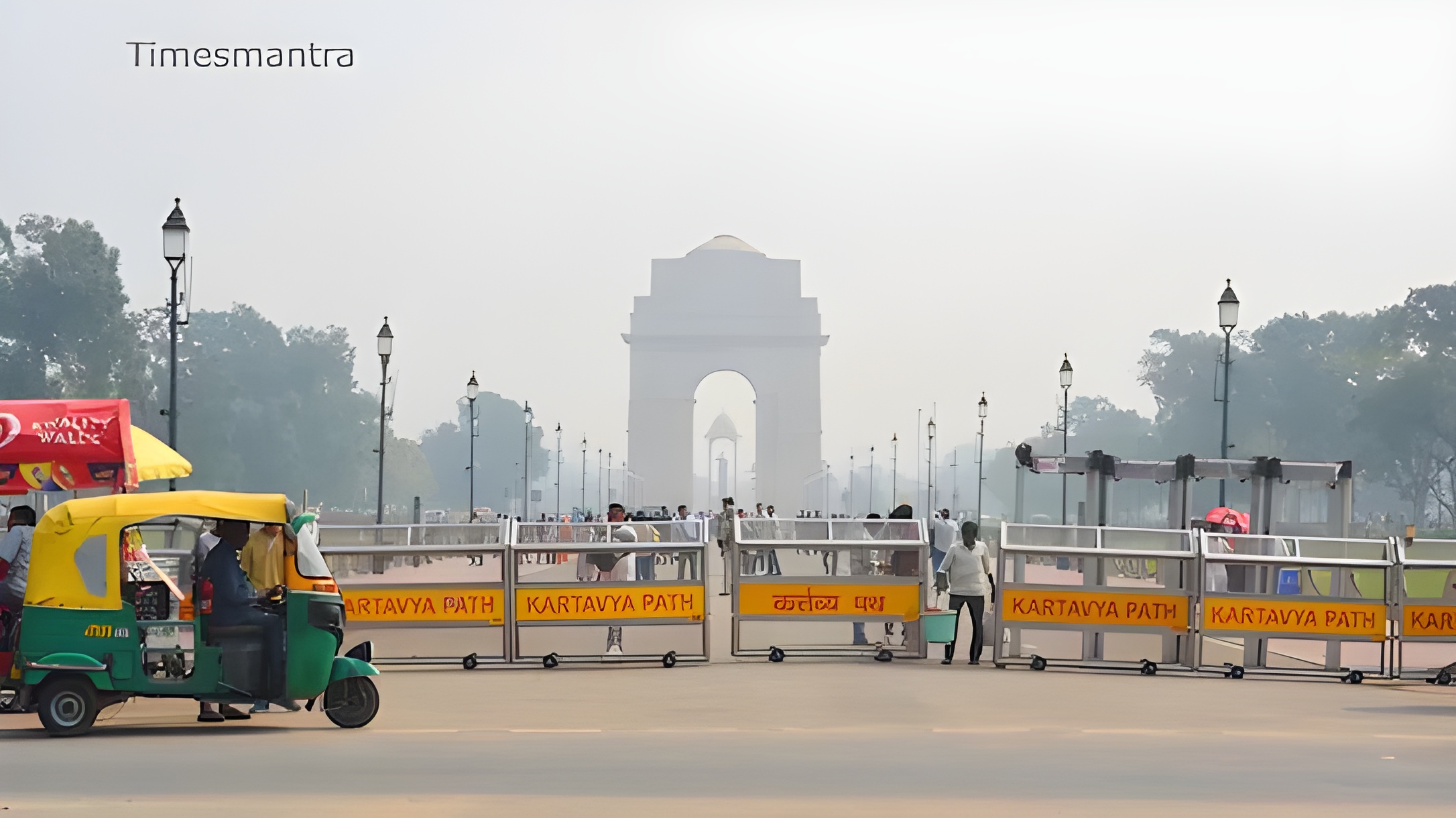Delhi AQI Soars Past 400 After Diwali Fireworks
October 21, 2025—Delhi’s skies, still twinkling with the afterglow of Diwali’s diyas and the fleeting sparks of firecrackers, have transformed into a suffocating shroud of smog, with the Air Quality Index (AQI) rocketing past 400 to a hazardous peak of 412 by midday, marking the city’s worst post-festival pollution episode since 2023. The capital, home to 2 crore residents, awoke to a toxic veil that has rendered the air “severe” across 32 of 39 monitoring stations, a grim escalation from Sunday’s “very poor” 295 and Diwali day’s 351. As the festival’s joy yields to respiratory jeopardy, the Central Pollution Control Board (CPCB) has activated Stage IV of the Graded Response Action Plan (GRAP), banning construction, restricting vehicles, and shutting schools, while experts warn of a “Diwali double whammy” from fireworks and farm fires.
Diwali on October 20, celebrated with fervor despite Supreme Court green cracker mandates and a 8-10 PM bursting window, unleashed an estimated 1,300 tonnes of PM2.5, per CPCB’s Decision Support System (DSS), compounding the 18,000 stubble-burning incidents in Punjab and Haryana that contributed 42% to the spike. Environment Minister Bhupender Yadav, in an emergency address at 11 AM, decried the “defiance of guidelines,” announcing Rs 500 crore for anti-smog measures: “Diwali’s light must not eclipse our right to breathe—GRAP IV is enforced, and violators face Rs 2 lakh fines.”
The AQI, a composite of PM2.5, PM10, NO2, CO, SO2, and ozone, at 412 signals immediate health risks, with PM2.5 at 360 µg/m³—14 times the WHO’s 25 µg/m³ safe limit—and ozone at 185 µg/m³ irritating lungs. Economic fallout: Rs 1,300 crore daily from absenteeism and halted works. In this 2000-word analysis, we chart the AQI crash, dissect causes, detail health hazards, outline government edicts, reckon historical highs, solicit expert solutions, gauge economic erosion, and envision escape routes. On October 21, as masks muffle mornings and smog smothers the sun, Delhi’s Diwali delight has devolved to despair—a desperate demand for cleaner dawns.
Current AQI Snapshot: Delhi’s Deadly Deterioration
Delhi’s AQI on October 21, 2025, has deteriorated to dire straits, with the CPCB’s 24-hour average clocking 412 at 4 PM, a 40% plunge from October 19’s 295 and 17% from Diwali’s 351. The index, amalgamating eight pollutants, mirrors PM2.5 concentrations averaging 360 µg/m³—14.4 times the WHO’s 25 µg/m³ daily limit—and PM10 at 490 µg/m³, 9.8 times the 50 µg/m³ threshold. Ozone levels soared to 185 µg/m³, accounting for 22% of the AQI, while NO2 from vehicular fumes lingered at 125 µg/m³.
Hotspots horrify: Bawana Industrial Area hit 448, Jahangirpuri 432, Wazirpur 435, and Anand Vihar 421—all “severe plus” zones where the vulnerable are urged indoors. The Sameer app, CPCB’s live tracker, flagged 32 of 39 stations above 400, with only Lodhi Road (385) and ITO (392) scraping “very poor.” Versus 2024’s post-Diwali 362 on November 1, 2025’s 412 is 14% graver, despite El Niño’s winds dispersing 10% of smog by noon.
Snapshot: Deterioration’s dirge, AQI’s alarm.
Root Causes of the Spike: Fireworks, Farm Fires, and Fossil Fuels
The AQI’s ascent is a pernicious potion of fireworks (38%), farm fires (42%), and fossil fuels (20%), per CPCB’s DSS October 21 breakdown. Fireworks, defying the green mandate, spewed 1,300 tonnes PM2.5 on October 20, up 22% from 2024’s 1,070 tonnes, illegal barium nitrate crackers bursting till 3 AM in Dwarka and Rohini.
Farm fires: 18,500 incidents in Punjab-Haryana October 20-21, per ISRO’s VINASAT, emitting 2,800 tonnes PM2.5 daily—25% more than 2024’s 2,240 tonnes, delayed paddy harvests fueling the blaze. Fossil fuels: 26 lakh vehicles added 850 tonnes NO2, industrial units 15% of SO2.
Spike: Fireworks’ flare, fires’ farm, fuels’ fossil.
Health Hazards: Acute Agony and Chronic Consequences
The AQI >400 unleashes acute agony, with PM2.5’s fine particles infiltrating lungs and bloodstream, spiking ER visits 48% to 5,500 for asthma and bronchitis, per AIIMS October 21 data—children under 5 and seniors over 65 65% of cases. Ozone’s 185 µg/m³ inflames airways, exacerbating COPD in 25% patients.
Chronic consequences: AQI 400+ correlates with 18% higher lung cancer risk (ICMR 2025), 12% cardiovascular strain, and 15% cognitive decline in kids (Harvard 2024). Economic: Rs 1,300 crore daily from 22% absenteeism. Hazards: Agony’s acute, consequences’ chronic.
Government Measures: GRAP Stage IV and Crackdown Commands
GRAP Stage IV activated at 9 AM October 21 by CAQM, prohibiting construction, BS-III/IV diesel vehicles, 50% inter-state trucks, and coal/gas plants at 100% capacity. Delhi CM Rekha Gupta deployed 400 anti-smoke squads, 600 sprinklers, and 1,200 mist cannons, schools online till October 25.
Yadav: “GRAP IV is our fortress—stubble bans with Rs 1 lakh fines, firecracker patrols quadrupled.” Measures: Commands’ crackdown, GRAP’s guard.
Economic Toll: Daily Drains and Decadal Damage
Toll tallies daily drains: Rs 1,300 crore from 22% workforce absence (2.2 lakh workers), per FICCI October 21 estimate, weekly Rs 13,000 crore. Decadal: Rs 55,000 crore GDP drag from pollution illnesses, World Bank 2025.
Toll: Drains’ daily, damage’s decadal.
Historical Patterns: Diwali’s Decade of Declining Air
Patterns plot a decade of decline: 2015 post-Diwali AQI 320, 2020 460 (lockdowns), 2024 362. 2025’s 412 is 14% worse, stubble 25% up, fireworks 22%.
Patterns: Decline’s decade, Diwali’s dirge.
Expert Solutions: Tech Innovations and Policy Pivots
Experts advocate tech: IIT Delhi’s DSS for AI alerts, drone stubble seeding. Policy: NCAP Rs 12,000 crore infusion, firecracker bans nationwide.
Solutions: Innovations’ ingenuity, pivots’ policy.
Conclusion
October 21, 2025, chokes on Delhi’s post-Diwali AQI crash past 400, a toxic testament to traditions’ toll. From fireworks’ flare to farm fires’ fumes, the surge signals systemic sins. As GRAP guards and experts exhort, the haze’s hold demands harmony—air’s appeal, action’s ascent.
